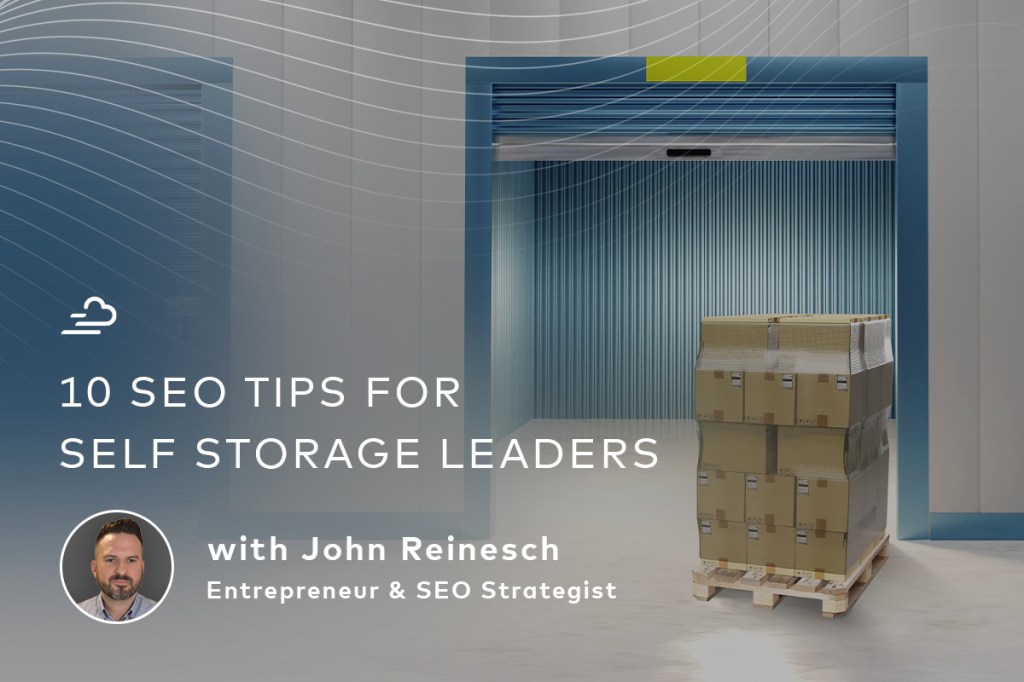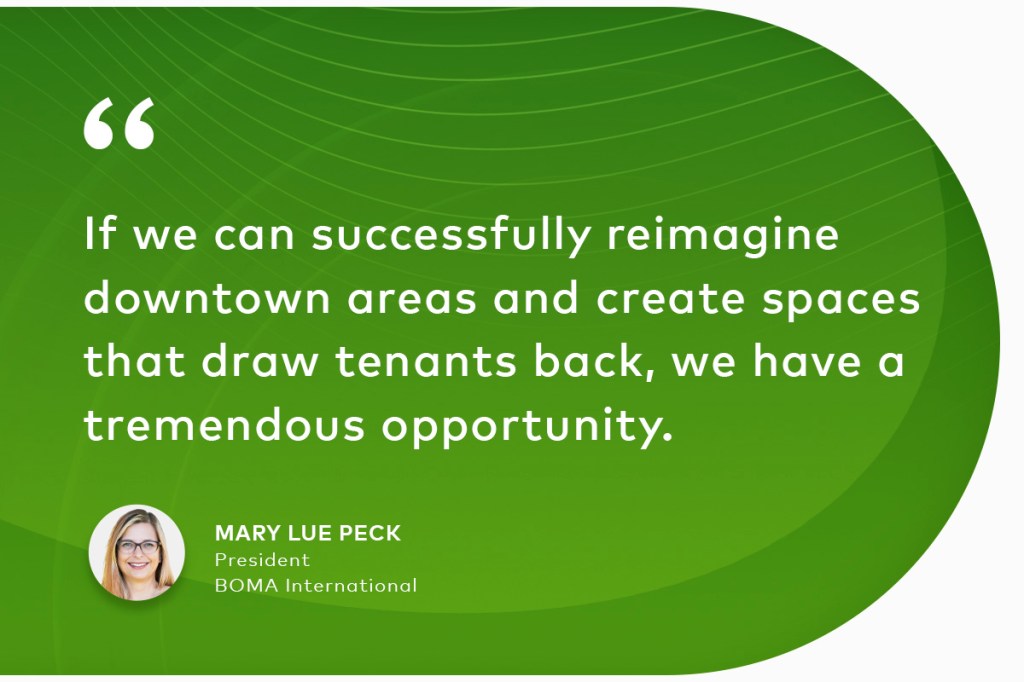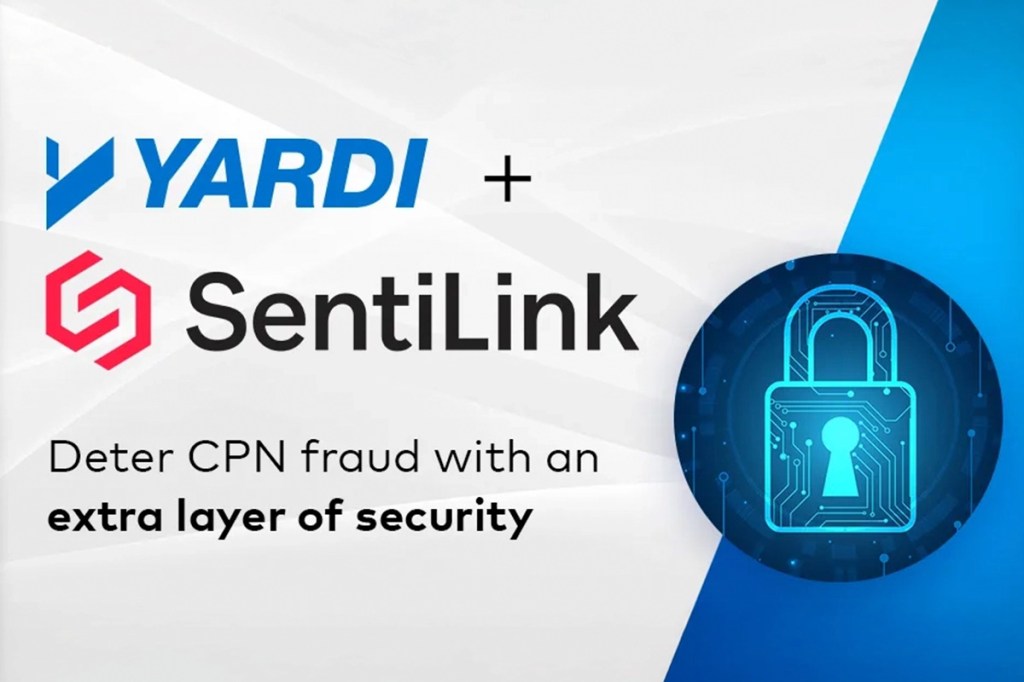
Today, most independent self storage leaders are competing against powerful REITs. You probably knew that, which means you also know that REITs stand at once big advantage: they can offer super low introductory rates that quickly go up once the customer is settled in. However, with the right Search Engine Optimization (SEO) strategy, small self storage businesses can step up their game to take on competition big and small.
You don’t need to be the cheapest place in town to get customers. In fact, you probably shouldn’t be! What you absolutely want to strive to be is the brand customers think of first.
To help us get into the finer points of this discussion, we spoke to John Reinesch, an SEO expert who specializes in self storage. As you’ll learn, an effective SEO strategy contains multiple parts. Together, these parts are essential for maintaining visibility and driving occupancy rates online.
If you know SEO matters but aren’t sure how to go about it, this read is for you.
1. Focus on local SEO
Local SEO is critical for capturing nearby customers searching for storage solutions. Having “good SEO” means that your business ranks highly when customers use relevant key phrases to find self storage in your area. Think about how far people are likely to travel to your facility: that’s the local audience you need to capture online. Ranking in the Google Maps pack (top three results) can significantly impact occupancy. John said, “Ranking in the map pack is crucial as it captures users looking for storage facilities nearby.”
Tips to boost your local SEO:
- Optimize your Google Business Profile (GBP): Ensure your GBP has accurate information, including business hours and contact details. “Your GBP is often the first thing potential customers see, and maintaining it properly can significantly improve local rankings,” John noted.
- Maintain NAP consistency: Ensure your Name, Address and Phone Number (NAP) are consistent across all directories, social media and your website. John explained, “Inconsistent NAP details can hurt your ranking and confuse customers.”
- Rank for location-specific keywords: Focus on high usage keyphrases such as “storage units near me” or “self storage in [city].” John stressed this point in our conversation, saying, “These local keywords help capture high-intent traffic ready to rent.”
- Use the power of your brand: One of the best ways to improve your SEO is to get people searching directly for your business name. “You can’t fake brand searches. They are a strong signal to Google,” John explained. Running ads, optimizing your Google Business Profile and all other search-related marketing will lead to more searches for your business name. Not only will your business likely appear first, it will be more likely to appear when other keyphrases are searched.
2. Optimize your website for mobility, speed & self-service
Most businesses have a website. Some people mistakenly think this means they’re “doing SEO.” In truth, a website is not enough to dominate SEO and search engine results pages (SERP), but having one is an important piece of the puzzle.
“Ranking highly in search results is important, but if your site is slow or hard to navigate, users will bounce,” said John. Mobile-friendly websites with fast loading times offer a better user experience. In turn, they keep customers on the site longer and rank higher in search. You can use a free tool like Google PageSpeed Insights to identify and resolve speed issues.
Finally, online booking is a must-have feature. Many customers prefer booking online without calling. If you really want to keep customers on your site, make that process seamless. Integrating self storage software like Yardi Breeze Premier will ensure customer requests are processed as efficiently as possible.
3. Budget for Google Ads & Local Service Ads
SEO takes time to build up, but Google Ads and Google Local Service Ads (LSAs) can provide immediate visibility. This is especially useful in competitive markets.
- Search Ads: Running paid search ads alongside organic listings can drive immediate traffic and will help strengthen your presence. Paid ads offer short-term boosts while organic traffic is a long-term, cost-saving strategy. The vast majority of web traffic comes from Google, so this is where you’re going to see the most bang for your buck.
- Local Service Ads (LSAs): These ads appear higher than traditional search ads. They’re meant to help businesses reach local audiences faster.
Both types of ads require a budget, and you are bidding against other advertisers to appear first. You never know what competitors are bidding. That means you need to track performance over time. Search for your target keywords to see if and where your ads appear. You may need to adjust your bids to find your sweet spot.
Fun fact: raising your ad budget doesn’t necessarily mean you’re going to get more leads. Don’t be afraid to play around with it.
4. Create targeted, location-specific pages
Create unique landing pages for each location to improve your chances of ranking for local searches. “Each facility should have its own optimized page to target specific local searches,” said John.
To make these pages work, avoid copying and pasting the same content across multiple locations. Tailor content to each location, noting nearby landmarks or community features. Use location-specific keywords like “RV storage in [city]” or “climate-controlled units near me.” These keywords help you capture niche search queries.
Also, include obvious calls to action (CTAs) to drive conversions. A CTA tells your customers what action you want them to take. Make it as easy as possible for them to book a unit or contact you.
5. Build domain authority with backlinks
Building domain authority through backlinks is critical for improving your rankings. “Even small storage operators who focus on backlinks can outrank larger competitors,” said John.
There are a few ways to do this:
- Partner with local businesses: Build partnerships with local businesses like real estate agents and movers for mutual backlinks. These partnerships help you earn backlinks and build local SEO strength.
- Get listed in directories: Ensure your business is listed in online directories (e.g., Yelp). These directories often rank high in search results and can drive quality traffic to your site.
- Be featured in media mentions: Get your business featured in local media for additional authority-building backlinks.
6. Optimize for aggregators & directories
In the previous section, we mentioned the importance of getting listed in directories to provide backlinks to those sites from your website. To do this, you’ll want to optimize your site in such a way that aggregators and directories find you. Here are three rules to apply when optimizing your website.
Rule #1: Be consistent
Keep your key (NAP) business details consistent across all directories.
Rule #2: Dial in your keywords
Include local keywords in your descriptions to boost visibility.
Rule #3: Monitor your online reviews
Respond to customer reviews to boost trust and influence SEO rankings. “Encouraging satisfied customers to leave reviews can greatly improve both your credibility and search rankings,” John advised.
At this point, you’ve probably noticed some overlap across sections in this article. Good on you! That’s because optimizing for one thing will help you optimize for another. For example, consistent business details are good for local SEO as well as directory listings. These strategies are all interconnected.
7. Create strategic, high-intent content
While extensive blog content may not be necessary, creating high-intent content that addresses customer needs can be a powerful SEO strategy. “Most people searching for storage are ready to rent quickly, so your content should target those immediate needs,” said John.
Here’s what works:
- Practical storage guides: Write content like “What fits in a 10×10 storage unit?” to answer common customer questions. Guides like these directly address what potential renters are searching for.
- Localized moving tips: Create city-specific moving guides to position your facility as a helpful resource. Such content serves the customers’ needs and search intent, which is the best way to improve relevance and SEO.
- FAQ section: Add FAQs to your website to answer common questions about your services and pricing. “FAQs are an easy way to rank for long-tail keywords while providing value to customers,” John noted.
8. Measure, analyze & adjust regularly
SEO is not a one-time task. It’s an ongoing process that requires regular monitoring and adjustments. “It requires ongoing effort to track, analyze and adjust based on performance,” said John. SEO results evolve over time, and staying on top of your metrics helps you understand what’s working and where improvements are needed.
- Use reporting tools: To stay on track, use tools like Google Analytics and Google Search Console to track your website’s performance. “These tools help you understand how traffic is flowing to your site, what keywords are driving that traffic and how visitors engage with your content,” John explained.
- Test, test, test: A/B testing different website meta data such as meta descriptions, page titles, alt text on images and CTAs helps you refine your strategy. It allows you to find the best combinations of phrases over time, increasing your chances of converting visitors into paying customers. Even if you can’t A/B test as often as you’d like, make sure the elements above are on every landing page on your website. Missing assets will hurt your SEO.
- Stay informed on Google’s algorithms: You can control the meta data on your website, but you can’t control Google’s search algorithms. Unfortunately, they are constantly changing. To add to the challenge, we don’t always know the specifics of what changed, even though Google gives us the broad strokes.
“What worked six months ago might not be as effective today,” John pointed out. Staying informed about changes and adjusting your strategy accordingly is key to maintaining good rankings. More on this in the next section, so keep reading!
9. Don’t rely solely on Google’s guidelines
Although Google offers general best practices for SEO, real-world experimentation often yields the best results. “You can’t always take what Google says at face value. Sometimes, what works in practice is different from what Google recommends,” said John.
This is where experimentation comes into play.
“In certain cases, we’ve found that experimenting with what Google doesn’t emphasize actually brings better results,” he explained. “While Google may downplay the importance of certain ranking factors, those factors might still influence results in specific markets.”
By testing various strategies and not relying solely on Google’s official guidelines, you can discover what works best for your specific market and business.
10. Boost organic rankings with higher click-through rates (CTR)
Another often overlooked factor in SEO is the click-through rate (CTR). If more people are clicking your organic listing compared to the one ranked above you, it sends positive signals to Google that people prefer your listing.
According to John, many self storage operators put a lot of effort into their ads but neglect their organic listings. “The titles and meta descriptions for your organic listings need the same level of attention,” John pointed out. These elements should be optimized to attract clicks, no matter your current search position.
“The more relevant your content appears to the user’s search query, the more likely they are to click,” noted John.
CTR can be a deciding factor for whether your listing moves up in the rankings. Improve it by adding engaging content to your website. Over time, you should see better SEO performance.
How long does it take to boost SEO?
Organic traffic takes time to accumulate. Likewise, higher search rankings take time. These measurements can take months, even years, depending on your market, resources and level of competition. That’s why ads are important for short-term boosts, even though they stop being effective the moment you stop spending.
A quarterly review can help you stay on top of your progress. Give every change you make four to six months to show results. If you’re changing things up too often, you’re not going to have a sense of what works and what doesn’t.
Remember, there’s no such thing as bad results — as long as you act on your data. We call results “signals” for a reason. You’re reading signs that point you where you need to go. Don’t give up just because you spent more than you brought in. Take what the data is giving you.
If you’re struggling or don’t know where to start, you can always bring in a professional SEO service to audit your efforts and/or manage your online presence.
Special thanks to John Reinesch
This article would not have been possible without the input and expertise of John Reinesch, an SEO expert based in West Harrison, New York. John began his career working with local agencies, managing SEO campaigns for medical clients like doctors and plastic surgeons. After gaining valuable agency experience, he transitioned into freelancing and consulting, eventually building his own SEO agency.
Around eight years ago, John first encountered the self storage industry while working with an agency that had self storage clients. While exploring real estate investment opportunities, he realized the potential of applying his SEO expertise to the self storage sector. John recognized that strong SEO could directly increase a facility’s value by driving occupancy — a unique advantage in self storage compared to other real estate sectors.
Now focused on self storage SEO, John works with various self storage operators to optimize their online presence and marketing strategies. In addition to consulting, he is actively pursuing his first self storage investment, combining his knowledge of SEO with his passion for real estate.



